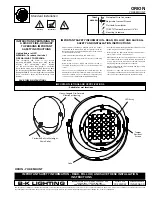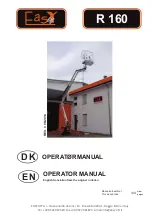
LEDS1
•
11
board. Put Q1 in its three holes, then bend it back so that it lays flat on the
board. Make sure that no metal on Q1 touches the ground plane of the
circuit board, only the rectangle directly behind it that acts as its heatsink.
42. Install R8, 1K ohm resistor [brown-black-red], to the right of Q1.
43. Install D12, 1N270, germanium diode under Q1. Line up the cathode
band again.
44. Install C2, .1 uF capacitor [marked 104], under D12.
45. Install C1, .1 uF capacitor [marked 104], next to C1.
46. Install R4, 10K ohm resistor [brown-black-orange], down and to the
right of Q1.
Now, you’re all done with the main board! You only need to solder the LEDs
onto the LED board and you will be ready to start strobing!
47. Install all the LEDs, look at the circuit board drawing to make sure they
go in the right way. These are 4 lead components and will be hard to
unsolder without destroying the board. There is a flat spot on the LEDs
that indicates which
two
pins are negative. Be sure the flat spot on the
drawing lines up with the flat spot on the board drawing. You may have
wondered why there are places for LEDs on the main board. This is for
you, the experimenter, to play around with. If you solder in your own LEDs
into these locations, they will flash along with the LED board. Be sure that
the LEDs can take 50ma of current if you aren’t using Telux LEDs.
48. Install R35, 150 ohm resistor [brown-green-brown]. It is a large resistor
so you’ll have to mount it standing up.
Summary of Contents for LEDS1
Page 16: ...LEDS1 16 LEDS1 MAIN BOARD PARTS LAYOUT DIAGRAM...
Page 17: ...LEDS1 17...
Page 18: ...LEDS1 18 LEDS1 SM 9 LED BOARD LAYOUT...
Page 19: ...LEDS1 19...
Page 20: ...LEDS1 20...
Page 21: ...LEDS1 21...
Page 22: ...LEDS1 22...










































